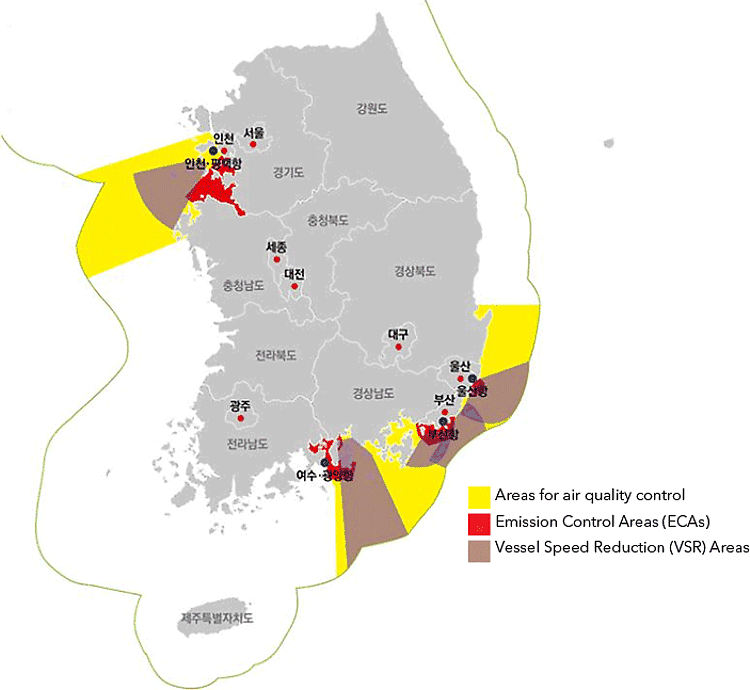Korea adopts marine Emission Control Areas and speed limits in ports
28 April 2020
The South Korean Ministry of Oceans and Fisheries (MOF) has announced an air quality program to control particulate emissions (‘fine dust’) from ships. The program defines selected South Korean ports and coastline areas as Emission Control Areas (ECA) with maximum fuel sulfur limits (0.1%) and introduces a Vessel Speed Reduction (VSR) program.
The program is applicable to areas surrounding five major Korean ports: Incheon, Yeosu/Gwangyang, Busan, Busan west, and Ulsan.

Sulfur Restrictions. The fuel sulfur requirements are introduced in two stages:
- From 1 September 2020 it is mandatory to use fuel with max. 0.1% sulfur content while berthing and anchoring. Vessels will be required to use max. 0.1% sulfur fuel beginning 1 hour after completion of berthing/anchoring, and until 1 hour before de-berthing/leaving anchor.
- From 1 January 2022, it will be mandatory to use fuel with max. 0.1% sulfur content while navigating ECAs.
Vessel Speed Reductions. The port areas selected are designated as VSR Sea Areas. Each Sea Area will span 20 nautical miles in radius, measured from a specific lighthouse in each port. Under the VSR program, ships will have their port facilities fees lowered when they enter defined port areas at reduced speed levels.
The speed reductions depend on the type of ships, and differ between ports. Ships should navigate no faster than 12 knots for container ships and car-carriers, and 10 knots for other ship types, when moving from starting point to an end point within a VSR Sea Area.
Ships covered under for the VSR program differ at each port, but must be over 3,000 GT. For affected ships, port entry/leave fee (current 111 KRW per ton), will be discounted. The discount ceiling will differ between the ports. Container ships, for example, which traditionally enter port at relatively high speeds, will enjoy up to a 30% discount, while other ships will be granted a 15% discount.
Source: DNV-GL | Korea MOF